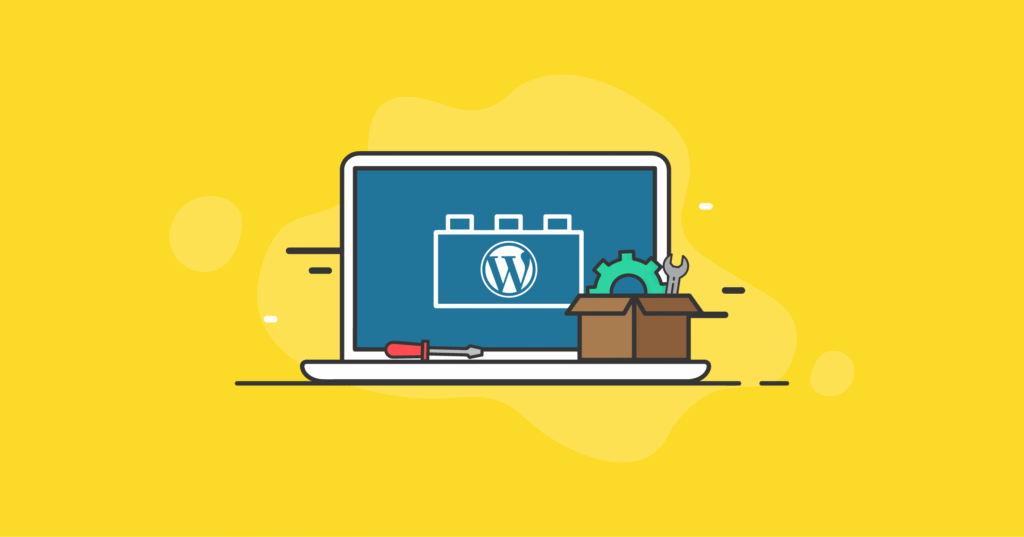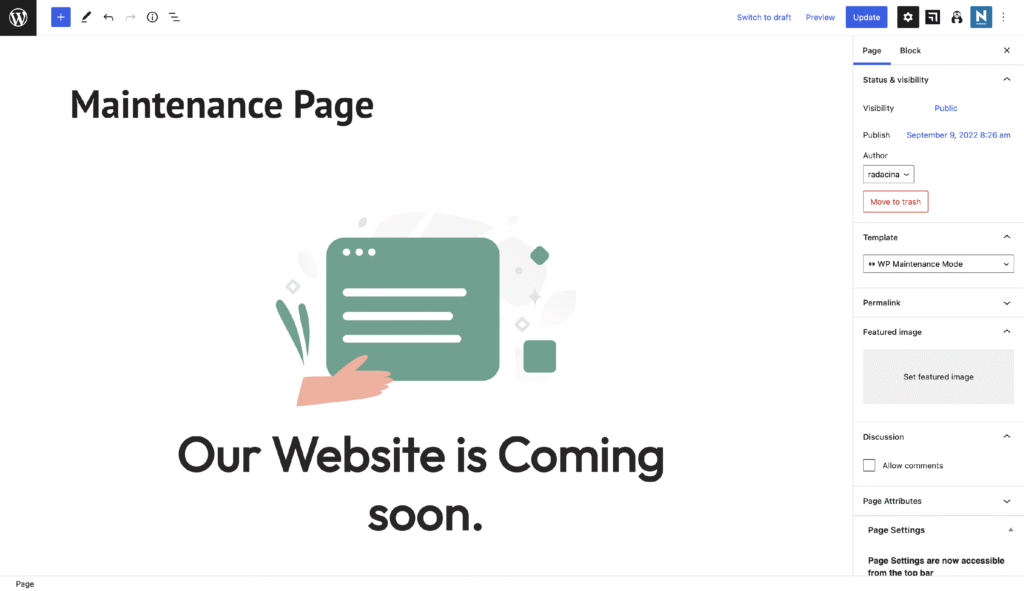How to Put WordPress in Maintenance Mode: Easy Methods to Safely Update Your Site
Every website needs a little downtime now and then whether it’s for updates new features or a quick fix. When I work on my WordPress site I don’t want visitors stumbling onto half-finished pages or broken links. That’s where maintenance mode comes in handy.
Putting WordPress in maintenance mode lets me make changes behind the scenes while showing a friendly notice to anyone who stops by. It’s a simple way to keep things professional and avoid confusing my audience. In this guide I’ll walk you through the easiest ways to enable maintenance mode so your site always looks polished—even during updates.
Understanding WordPress Maintenance Mode

WordPress maintenance mode displays a temporary message to visitors when a site’s content undergoes updates or fixes. I use this mode to prevent pages with errors or incomplete information from appearing online. By activating maintenance mode, I signal to users that changes are in progress and the site’s content remains secure.
Key Features of Maintenance Mode
- Displays a customizable message for visitors, for example, « Site Under Maintenance »
- Restricts access to public-facing content, allowing only logged-in administrators to view the site
- Prevents search engines from crawling unfinished pages, reducing negative SEO impact
When to Activate Maintenance Mode
| Scenario | Example Context | Purpose |
|---|---|---|
| Core, plugin, or theme updates | Updating WooCommerce or themes | Protects visitors from feature disruptions |
| Database changes | Migrating content or tables | Ensures data consistency and integrity |
| Design refresh | Changing homepage layout | Masks visual inconsistencies |
How WordPress Initiates Maintenance Mode
Core WordPress uses an automatic « .maintenance » file placed in the root directory when core or major plugin updates occur. I trigger it manually or with plugins to keep users informed during longer maintenance sessions.
If my site remains in maintenance mode after tasks complete, I check for the « .maintenance » file and remove it to restore normal access. Consistent use of maintenance mode preserves site reliability and user trust by managing expectations during essential backend work.
Reasons to Use Maintenance Mode
- Preventing Access During Updates
I restrict visitor access while deploying core, plugin, or theme updates, avoiding exposure to incomplete or broken pages.
- Maintaining Professional Image
I preserve my brand’s credibility by displaying a tailored message instead of error screens or layout issues.
- Protecting Data Integrity
I secure user interactions by avoiding site changes during crucial maintenance, which prevents data loss if a casino site’s game updates are in process.
- Managing SEO Impact
I avoid search engines indexing unfinished or error-prone content by enabling maintenance mode, ensuring rankings don’t drop due to visible errors or missing resources.
- Ensuring Security During Database Changes
I reduce risk when making database modifications by blocking unauthorized access, especially when handling sensitive sign-up or payment data.
Maintenance Mode Usage Scenarios
| Scenario | Description | Recommended? |
|---|---|---|
| Core Updates | WordPress version changes | Yes |
| Plugin/Theme Installations | Adding or updating plugins/themes | Yes |
| Casino Game Integration | Deploying or updating casino gaming features | Yes |
| Database Optimization | Adjustments to tables, queries, or performance | Yes |
| Site Redesign or Major Layout Revision | Overhauling site appearance or UX | Yes |
| Security Fixes or Vulnerability Patches | Patching exploits or bugs | Yes |
Built-In WordPress Maintenance Feature
WordPress includes an automatic maintenance mode that activates during core, plugin, or theme updates. Visitors see a brief message when they access the site, ensuring incomplete updates don’t become visible.
How It Works
Activating the default maintenance feature happens automatically. When I start a core, plugin, or theme update, WordPress places a .maintenance file in the site’s root directory. This file shows users a message stating, “Briefly unavailable for scheduled maintenance. Check back in a minute.” The site remains accessible to administrators who are logged in.
| Built-In Feature | Activation Trigger | Visible To | Customizable | Typical Use |
|---|---|---|---|---|
| Default Maintenance Mode | Core/plugin/theme update | Visitors | No | WordPress site updates |
Limitations of the Default Feature
Customizing the built-in message isn’t possible without editing core files. Display options offer limited control—WordPress only shows a plain text notice, with no support for branding or scheduled downtime messages. The mode triggers only for core update actions, so it doesn’t remain active for custom maintenance routines or extended site changes.
| Limitation | Example |
|---|---|
| No Customization | Can’t add logo, styling, or detailed instructions |
| Only Auto-Activated | Triggers only for official update processes |
| No Scheduling | Can’t set maintenance for future dates or times |
| No Casino Integration | Doesn’t support custom content for casino updates |
Methods to Put WordPress in Maintenance Mode

Several methods let me activate maintenance mode in WordPress, with each approach fitting different site needs, levels of control, and customization. I compare key features using the table below.
| Method | Technical Skill Required | Customization Level | Easy to Revert | Suited For |
|---|---|---|---|---|
| Plugin | Low | High | Yes | Most updates, custom notices |
| Custom Code | Medium | Moderate | Manual | Simple sites, minimal edits |
| .htaccess File | High | Advanced | Manual | Full site blocks, developers |
Using a Plugin
Activating WordPress maintenance mode with a plugin offers the simplest process for most users. I install a plugin like « WP Maintenance Mode » or « SeedProd, » then configure settings directly within the WordPress dashboard. Plugins provide editable templates, countdown timers, and branding options. I preview maintenance messages before enabling public notifications. Some plugins support whitelisting IP addresses, letting my team access the site while visitors see the maintenance notice. Plugin-based solutions update without affecting core files or code, keeping deployment straightforward.
Adding Custom Code
Inserting custom code enables WordPress maintenance mode without external plugins. I add a PHP function inside the theme’s functions.php file or create a custom plugin. My code checks user roles, showing a maintenance message to visitors while logged-in administrators access the full site. This method allows moderate customization of messaging, with minimal performance overhead. If I forget to remove the code after maintenance, the site stays inaccessible until corrected.
Editing the .htaccess File
Directly modifying the .htaccess file lets me put the entire WordPress site into maintenance mode at the server level. I use rewrite rules to redirect all visitors to a static HTML maintenance page. This method overrides WordPress routing, blocks all public access, and suits advanced users comfortable with server configuration. Editing .htaccess avoids PHP execution, covers all URL requests, and offers maximum control. I revert changes manually to restore full site access.
Best Practices for Maintenance Mode
I use these best practices to keep my WordPress site professional and user-friendly during scheduled downtime. Consistent execution helps preserve user trust and SEO integrity.
Customizing the Maintenance Message
I customize the maintenance message to inform visitors, set expectations, and reinforce my brand. Clear messaging reduces confusion and maintains a professional appearance. Including estimated downtime, support links, and contact info helps users feel informed.
| Message Feature | Example | Benefit |
|---|---|---|
| Estimated Downtime | « We’ll be back by 4:00 PM (UTC-5) » | Sets expectation |
| Contact Details | « For urgent issues, email support@domain.com » | Offers help and increases confidence |
| Branding | Displaying logo and brand colors | Maintains site identity |
| Progress Updates | « Site updates 75% complete » | Provides transparency |
Notifying Visitors and Search Engines
I notify visitors with friendly on-site banners, popups, or modals. Including a clear, concise message ensures users know maintenance is temporary.
For search engines, I use the HTTP 503 status header so bots don’t index unfinished pages. The Retry-After header tells engines when to recrawl, minimizing SEO impact.
| Notification Type | Method | Purpose |
|---|---|---|
| Visitor | Custom message or popup | Prevents confusion |
| Search Engine | HTTP 503 + Retry-After header | Avoids negative SEO effects |
If my site integrates casino games or regulated content, I update notices to reference compliance or in-game data integrity. Using these tailored practices ensures all users and search engines remain accurately informed during updates.
Troubleshooting Common Maintenance Mode Issues
Resolving Stuck Maintenance Mode
Clearing stuck maintenance mode in WordPress involves removing the .maintenance file from the site root. If updates get interrupted, WordPress may leave this file and block public access until it’s manually deleted. Removing this file restores normal site operation immediately if an outage occurs.
Fixing Plugin-related Conflicts
Identifying plugin-related issues involves disabling all plugins through FTP or your hosting control panel. Conflicts between maintenance mode plugins and caching, security, or optimization plugins (such as WP Super Cache or Wordfence) may cause incorrect maintenance banners or block admin access. Renaming the plugin folder helps isolate the issue and regain access if plugin conflicts appear.
Addressing Admin Access Loss
Restoring admin access while maintenance mode is active requires direct database or file system intervention. Accessing wp-config.php or user records in phpMyAdmin lets me reset admin credentials and regain site entry if plugin or code errors lock me out.
Correcting Caching Problems
Flushing site cache in the hosting dashboard or WordPress admin area resolves cases where visitors see a stale maintenance message after the update. Browser cache may also cause the issue, so users must sometimes clear their cache for new content to appear.
SEO Impact Table
| Issue | Cause | Resolution |
|---|---|---|
| Pages indexed in maintenance | Missing HTTP 503 status header | Add or enable 503 status in plugin/settings |
| Old message persists | Cache or CDN serving stale content | Purge all cache and CDN content |
| Crawlers see maintenance | Search engines crawl during update | Restrict crawl during downtime, enable 503 |
Casino-specific Maintenance Concerns
Maintaining operational compliance on sites with casino integrations requires several extra checks. Casino plugin updates or game maintenance may trigger extended downtime or API errors. Monitoring logs for API failures and notifying users of live table downtimes ensures no regulatory or customer service issues emerge during updates.
| Symptom | Likely Cause | Recommended Action |
|---|---|---|
| Site stuck in maintenance | .maintenance file |
Delete .maintenance from root |
| Can’t access admin panel | Plugin/code error | Rename plugin folder or fix code |
| Persistent maintenance message | Cache or CDN | Clear all caches, purge CDN |
| Broken site after maintenance | Failed update | Restore backup, check logs |
| Casino lobby/games display error | API/plugin maintenance | Check casino logs, notify users |
Conclusion
Putting WordPress in maintenance mode is a smart move whenever I’m making updates or changes behind the scenes. It helps me protect my site’s reputation and keeps visitors in the loop without exposing unfinished work. By choosing the right method and following best practices I can ensure my site stays secure professional and user-friendly no matter what updates I need to tackle.
Frequently Asked Questions
What is WordPress maintenance mode?
WordPress maintenance mode is a feature that temporarily displays a custom message to visitors when your website is undergoing updates or changes. This prevents users from seeing incomplete pages or encountering errors.
Why should I use maintenance mode during updates?
Using maintenance mode during updates keeps your site looking professional, prevents visitors from accessing unfinished pages, and helps maintain data integrity and security.
How does maintenance mode affect SEO?
Maintenance mode prevents search engines from indexing incomplete content by showing a HTTP 503 status code, which tells search engines the downtime is temporary and won’t negatively impact your rankings.
Can I customize the maintenance mode message?
Yes. Most maintenance mode plugins and manual methods allow you to customize the message, add branding, give estimated downtime, and provide contact details to keep visitors informed.
What are the easiest ways to activate maintenance mode in WordPress?
The simplest way is to use a maintenance mode plugin. More advanced users can add custom code to their theme’s functions.php or edit the .htaccess file for greater control.
When should I enable maintenance mode on my site?
Enable maintenance mode during core, plugin, or theme updates, database changes, site redesigns, security fixes, or any situation where visitors might encounter incomplete content.
What should I include in my maintenance mode message?
Include a clear message, estimated downtime, your branding, contact information, and a brief reason for the maintenance to reassure and inform your visitors.
Can maintenance mode be scheduled in advance?
Most plugins offer the ability to schedule maintenance mode. However, WordPress’s built-in feature does not support scheduling and only activates during official updates.
How do I fix a site stuck in maintenance mode?
Delete the .maintenance file from your website’s root directory. If needed, disable conflicting plugins or restore admin access via your database.
Are there special maintenance mode practices for casino sites?
Yes. For casino sites, always monitor API logs, notify users of downtime, and ensure compliance to protect game data and maintain trust with your players.

